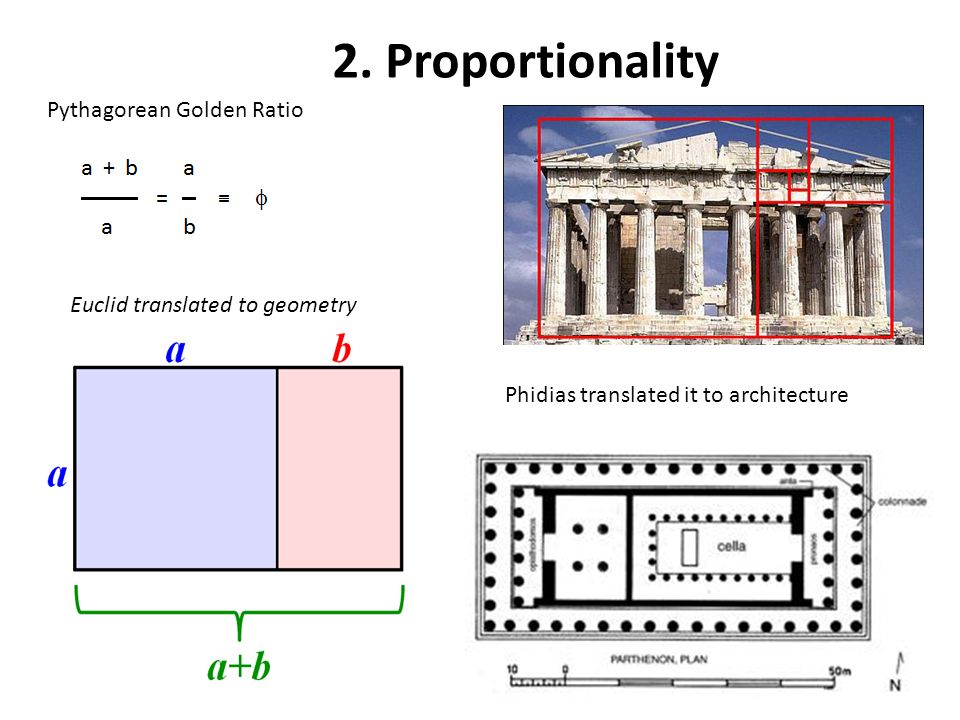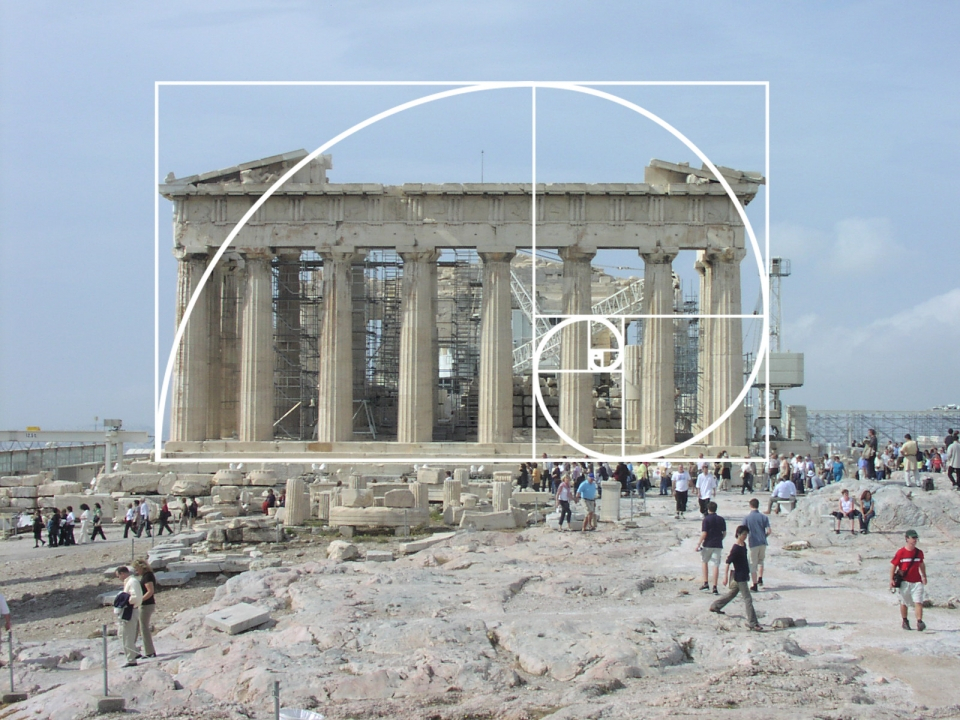|
|
Midnight in Paris
| Midnight in Paris |

Theatrical release poster
|
| Directed by |
Woody Allen |
| Written by |
Woody Allen |
| Produced by |
|
| Starring |
|
| Cinematography |
Darius Khondji |
| Edited by |
Alisa Lepselter |
Production
companies |
|
| Distributed by |
Sony Pictures Classics (United States)
Alta Films (Spain)[1] |
| Release dates |
- May 11, 2011 (Cannes)
- May 13, 2011 (Spain)
- May 20, 2011 (United States)
|
| Running time |
94 minutes[2] |
| Countries |
|
| Language |
English |
| Budget |
$17 million[1] |
| Box office |
$151.7 million[1] |
Midnight in Paris is a 2011 fantasy comedy film written and directed by Woody Allen. Set in Paris, the film follows Gil Pender (Owen Wilson), a screenwriter and aspiring novelist, who is forced to confront the shortcomings of his relationship with his materialistic fiancée (Rachel McAdams) and their divergent goals, which become increasingly exaggerated as he travels back in time to the 1920s each night at midnight.[3]
Produced by the Spanish group Mediapro and Allen's US-based Gravier Productions, the film stars Wilson, McAdams, Kathy Bates, Adrien Brody, Carla Bruni, Tom Hiddleston, Marion Cotillard, and Michael Sheen. It premiered at the 2011 Cannes Film Festival and was released in the United States on May 20, 2011.[3][4] The film opened to critical acclaim. In 2012, it won the Academy Award for Best Original Screenplay and the Golden Globe Award for Best Screenplay. It was nominated for three other Academy Awards: Best Picture, Best Director and Best Art Direction.[5]
In 2010, disillusioned screenwriter Gil Pender and his fiancée, Inez, vacation in Paris with Inez's wealthy parents. Gil, struggling to finish his debut novel about a man who works in a nostalgia shop, finds himself drawn to the artistic history of Paris, especially the Lost Generation of the 1920s, and has ambitions to move there, which Inez dismisses. By chance, they meet Inez's friend, Paul, and his wife, Carol. Paul speaks with great authority but questionable accuracy on French history, annoying Gil but impressing Inez.
Intoxicated after a night of wine tasting, Gil decides to walk back to their hotel, while Inez goes with Paul and Carol by taxi. At midnight, a 1920s car pulls up beside Gil and delivers him to a party for Jean Cocteau, attended by other people of the 1920s Paris art scene. Zelda Fitzgerald, bored, encourages her husband Scott and Gil to leave with her. They head to a cafe where they run into Ernest Hemingway and Juan Belmonte. After Zelda and Scott leave, Gil and Hemingway discuss writing, and Hemingway offers to show Gil's novel to Gertrude Stein. As Gil leaves to fetch his manuscript, he returns to 2010; the cafe is now a laundromat.
The next night, Gil tries to repeat the experience with Inez, but she leaves before midnight. Returning to the 1920s, Gil accompanies Hemingway to visit Gertrude Stein, who critiques Pablo Picasso's new painting of his lover Adriana. Gil becomes drawn to Adriana, a costume designer who also had affairs with Amedeo Modigliani and Georges Braque. Having heard the first line of Gil's novel, Adriana praises it and admits she has always longed for the past.
Gil continues to time travel the following nights. Inez grows jaded with Paris and Gil's constant disappearing, while her father grows suspicious and hires a private detective to follow him. Adriana leaves Picasso and continues to bond with Gil, who is conflicted by his attraction to her. Gil explains his situation to Salvador Dalí, Man Ray, and Luis Buñuel; as surrealists, they do not question his claim of coming from the future. Gil later suggests the plot of "The Exterminating Angel" to Buñuel.
While Inez and her parents travel to Mont Saint Michel, Gil meets Gabrielle, an antique dealer and fellow admirer of the Lost Generation. He later finds Adriana's diary at a book stall, which reveals that she was in love with Gil and dreamed of being gifted earrings before making love to him. To seduce Adriana, Gil tries to steal a pair of Inez's earrings but is thwarted by her early return to the hotel room.
Gil buys new earrings and returns to the past. After he gives Adriana the earrings, a horse-drawn carriage arrives, transporting them to the Belle Époque, an era Adriana considers Paris's Golden Age, they go to the Moulin Rouge where they meet Henri de Toulouse-Lautrec, Paul Gauguin, and Edgar Degas, who all agree that Paris's best era was the Renaissance. Adriana is offered a job designing ballet costumes; thrilled, she proposes to Gil that they stay, but he, observing the unhappiness of Adriana and the other artists, realizes that chasing nostalgia is fruitless because the present is always "a little unsatisfying." Adriana decides to stay, and they part ways.
Gil rewrites the first two chapters of his novel. He retrieves his draft from Stein, who praises his rewrite. Still, he says that on reading the new chapters, Hemingway does not believe that the protagonist does not realize that his fiancée, based on Inez, is having an affair with the character based on Paul. Gil returns to 2010 and confronts Inez, who admits to sleeping with Paul but disregards it as a meaningless fling. Gil breaks up with her and decides to move to Paris. The detective following him takes a "wrong turn" and ends up being chased by the palace guards of Louis XVI just before a revolution breaks out. While walking by the Seine at midnight, Gil encounters Gabrielle. As it begins to rain, he offers to walk her home and learns that they share a love for Paris in the rain.
Main cast
|
|
|
|
|
Governor General David Johnston (right) with actor Michael J.Fox at Rideau Hall on May 27, 2011 during an Order of Canada ceremony.
PATRICK DOYLE / THE CANADIAN PRESS
OTTAWA—Actor Michael J. Fox is now an officer of the Order of Canada.
The Edmonton-born actor and activist is among 43 people who received their medals from Gov. Gen. David Johnston at a Rideau Hall ceremony.
Others include rock legend Robbie Robertson, hockey commentator Howie Meeker, Acadian filmmaker Phil Comeau, former cabinet minister Anne McLellan and Trudeau biographer Stephen Clarkson.
Fox was honoured for his efforts on behalf of those suffering from Parkinson’s disease, as well as his television and film work.
Fox, diagnosed with Parkinson’s two decades ago, called the award a great honour.
He chuckled that he felt like an imposter when he glanced around at his fellow inductees.
“I don’t begin for a second to put myself in the league of any of these people,” he said. “When I listen to what they’ve done, that’s Canadian to me. It’s a seriousness and a sense of humour, it’s a lot of contradictions.”
He said Canada always makes him think “of vast spaces and tight communities.”
“We think of ourselves huddled against the elements and helping each other. It’s very moving to be part of it.”
https://www.thestar.com/entertainment/michael-j-fox-receives-order-of-canada/article_8f612aa5-9d87-5133-9984-8c2b1b3eaa4f.html |
|
|
|
|
 
Pope Francis delivered a speech too progressive for Obama to give
Sep 24, 2015, 4:20 PM GMT-3
Pope Francis waves to the crowd from the Speakers Balcony at the US Capitol, September 24, 2015, in Washington, DC. Pool/Getty Images
If President Barack Obama had delivered the text of Pope Francis’s speech to Congress Thursday as a State of the Union address, he would have risked being denounced by Republicans as a socialist.
While most Republicans chose not to complain, and Democrats tried not to gloat, Francis’s speech to Congress was stunning in the breadth, depth, and conviction of its progressivism. That might not have been fully and immediately appreciated by everyone in the House chamber because the combination of Francis’s sotto voce delivery and his heavily accented English made it difficult, lawmakers said, to grasp everything he was saying.
But there was no mistaking his thrust. He made detailed arguments for openness to immigrants, addressing the human roots of climate change, closing the gap between the rich and the poor, and ending the death penalty — all of which invigorated the Democrats in the room.
“It was pretty progressive. He had a little right-to-life stuff in it,” Rep. James Clyburn, the third-ranking House Democrat, said as he cracked a smile thinking about how Republicans would receive the speech. “That’s enough for them.”
The pope isn’t going to change many hearts and minds in the badly divided Congress, lawmakers said, but the moment provided a brief respite from political warfare. Several presidential candidates, including Sens. Bernie Sanders, Lindsey Graham, Marco Rubio, and Ted Cruz, as well as Ben Carson, attended.
Rubio, a Roman Catholic, said in a brief interview that Francis “struck the right tone.” Sanders, a self-described socialist, seemed to like the content even more.
“Pope Francis is clearly one of the important religious and moral leaders not only in the world today but in modern history,” he said in a statement released after the speech. “He forces us to address some of the major issues facing humanity: war, income and wealth inequality, poverty, unemployment, greed, the death penalty and other issues that too many prefer to ignore.”
Democrats were eager enough to present Congress as united that they joined a Republican-led standing ovation when Francis told lawmakers of “our responsibility to protect and defend human life at every state of its development.” Several of them said it was out of respect for the pope. But there was another good reason: It strengthened the perception that the whole speech — most of which they liked — carried unifying themes.
Unity was good for Democrats because the speech favored their policies
Francis was interrupted a few times by whoops from the Democratic side of the chamber — by Steve Cohen, a Jewish Memphis Democrat who got excited about Francis’s mention of the Golden Rule; by New York’s Nydia Velázquez when he called for an end to the death penalty; and by Philadelphia Rep. Chaka Fattah when he mentioned his upcoming visit to that city. The Republicans in the room were a bit more staid. Cruz often appeared unmoved during moments when Rubio, who was sitting nearby, applauded. That was the case when Francis asked whether the greater opportunities sought by past generations of immigrants are “not what we want for our own children?”
It was a home crowd. Rep. Paul Gosar (R-AZ) had announced he would boycott the event over climate change, and there was a brief murmur when it became obvious that three conservative Catholic Supreme Court justices — Antonin Scalia, Samuel Alito, and Clarence Thomas — had not shown up. But it seemed that everyone in attendance just wanted to catch a glimpse of Francis and hear what he had to say.
Big-name guests filed into the public galleries above the House chamber long before the pope’s arrival: Former House Speaker Newt Gingrich, former Rep. Gabby Giffords, mega-donor Tom Steyer, and Carson. House members filled the seats in their chamber, followed by the Senate and four Supreme Court justices. At about a minute past 10 am, Francis strode down the center aisle of the House chamber, clad in his familiar white robe and skullcap.
Lawmakers, who had been admonished not to touch the pope, refrained from trying to shake his hand or pat his back. There was no rush to crowd him the way members of Congress try to get into pictures with the president during the annual State of the Union address. When he got to the end of the aisle, he quietly shook hands with Secretary of State John Kerry and then made his way to the rostrum.
Samantha Power, the US ambassador to the UN, pulled out a baby blue iPhone and began snapping pictures. Though she later took to Twitter to commemorate the moment, Power hadn’t posted any of her photos by midday.
For his part, Francis warmed up the audience by describing America as “the land of the free and the home of the brave.” He was slow to move into more politically charged territory but unimpeded when he did. There were 10 standing ovations after his initial greeting, and they were bipartisan.
Francis tackled tough issues at the heart of the US political debate and gently admonished lawmakers to build bridges
At times, Francis seemed to be speaking directly into the headlines and newscasts of the day.
Less than a week after Carson said that America shouldn’t elect a Muslim president, Francis warned that “a delicate balance is required to combat violence perpetrated in the name of a religion, an ideology or an economic system, while also safeguarding religious freedom, intellectual freedom and individual freedoms.”
As Republican presidential frontrunner Donald Trump promises to build a wall between Mexico and the US, and to prevent Syrian refugees from being admitted to America, Francis compared the current refugee crisis to the one that arose in World War II and said that “we the people of this continent are not fearful of foreigners, because most of us were once foreigners.” That drew a standing ovation. Rubio, who has shifted his emphasis on immigration reform over time, leaped to his feet.
And while Democrats continue to bask in this summer’s Supreme Court decision protecting same-sex marriage, the pope said he was concerned that “fundamental relationships are being called into question, as is the very basis of marriage and the family.” The issue that caused the biggest stir before the speech — climate change — factored prominently in Francis’s remarks. He spoke of the human roots of global warming and said, “I am convinced we can make a difference.”
But perhaps the most unexpected run in the speech was an admonishment as gentle as it was clear: Politics is about building bridges, not destroying them. Francis never mentioned the international nuclear nonproliferation deal with Iran by name or the gridlock in American politics, but he seemed to be speak to both matters.
“When countries which have been at odds resume the path of dialogue — a dialogue which may have been interrupted for the most legitimate of reasons — new opportunities open up for all,” he said. “A good political leader is one who, with the interests of all in mind, seizes the moment in a spirit of openness and pragmatism. A good political leader always opts to initiate processes rather than possessing spaces.”
Pennsylvania Republican Rep. Joe Pitts, speaking about the pope’s limited remarks on abortion and same-sex marriage, said he was displeased that Francis had been “unfortunately politically correct.”
For liberals, though, he was simply correct about politics.
https://www.vox.com/2015/9/24/9393731/pope-francis-speech-progressive-obama
|
|
|
|
|
Unexplained Mystery: The Devil’s Sea – The Dragon’s Triangle
Several places in the world are eerie with unexplainable events and observations. Most call them haunted while others look for scientific explanations. The marine world also has a few such locations like the Bermuda Triangle, the Devil’s Sea or the Dragon’s Triangle with stories of vanishing vessels, ghost ships drifting without a soul in sight etc.
Located near the Japanese coast in the Pacific Ocean, the Devil’s Sea (Ma-no Umi in Japanese) is one of the twelve Vile Vortices around the earth. Vile vortices are those areas where the pull of the planet’s electromagnetic waves is stronger than anywhere else. As the title indicates, the Dragon’s Triangle extends as a triangle between Japan and the Islands of Bonin, including a major portion of the Philippine Sea.
Geographically, the triangle is located around Miyake, a Japanese island that lies 100 km south of Tokyo. However, the exact location of the Devil’s Sea is disputed.
Some reports state that it is 110 km from Japan’s east coast, while others claim that it is located near Iwo Jima, a Japanese Volcano Island which is almost 1,200 km from the Japanese coast. Since the Devil’s Sea is not officially included in the map, the actual size and the perimeter of the notorious waters remain unknown.
The area has also been called the Pacific Bermuda Triangle, denoting its position that is precisely opposite to the Bermuda Triangle and the similarities in the “paranormal phenomena” of the area with that of the Bermuda Triangle.
According to legends, the waters of the Devil Sea can engulf the mightiest of ships and their crew. The region has been famous for ship disappearances.
Notable Events in the Devil’s Sea
It is said that the conqueror Kublai Khan, the fifth Great Khan of the Mongol Empire and the grandson of Genghis Khan, had tried to make inroads into Japan in 1274 and 1281 AD. However, in both attempts, he failed to invade the country after losing his vessels and 40,000 crew members in this triangular area, reportedly due to typhoons.
As Kublai Khan and his army abandoned the plan to invade Japan, the Japanese believed God sent the typhoons to save them from the enemies.
Another story is about the sighting of a mysterious lady sailing a vessel in the Devil’s Sea in the early 1800s. It is said that the vessel resembled the traditional Japanese equipment for burning incense. However, the destination and identity of the vessel remain a mystery.
In the 1940s and 1950s, many fishing vessels and over five military vessels disappeared between Miyake Island and Iwo Jima.
Japan sent a research ship, Kaio Maru No.5 in 1952 to investigate the disappearances. However, this vessel also went missing. Its wreck was recovered later, but nobody knows what happened to the 31 crew members.
Following this incident, the Japanese government declared this area dangerous for marine voyaging and transporting goods. Moreover, after this unprecedented incident, all efforts to unearth the facts behind the mystery were also aborted.
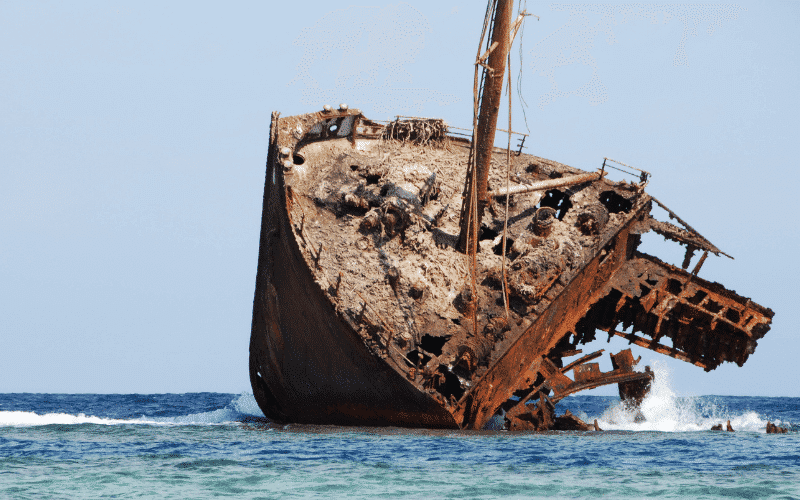 Representation image
Origin of the Devil’s Sea Name
The term dragon in the name of the Devil Sea originates from the Chinese fable about dragons living in its waters. According to these fables, the dragons under the sea attack vessels passing by to satiate their hunger. These fables originated well before the AD period – 1000 BC era.
Similarly, the Japanese name “Ma-No Umi,” which means the Sea of the Devil, was originally coined by Japanese years ago when the stories of paranormal phenomena in the sea were popularized.
The superstitions associated with the Devil’s Sea always haunted the Japanese from venturing into this part of the ocean.
Other Explanations for the Mystery of Devil’s Sea
As the Devil’s Sea was popularized through legends, there were also hypotheses, including scientific explanations, attempting to solve the mystery. Several efforts were made to understand the truth behind the paranormal phenomenon.
Scholars like Ivan Sanderson suggested that the hot and cold currents crossing this Vile Vortice led to the disappearance of vessels in the Devil’s Sea. According to him, these currents result in electromagnetic disturbances that trap the ships passing by.
Another hypothesis suggested that the subsea volcanoes in the area were to blame. The eruptions from these volcanoes could have initiated such accidents, substantiating stories of dragons sucking in ships and their crew to the ocean’s depths.
Due to the undersea volcanoes and seismic activities, according to marine scholars, the islands in the area often disappear suddenly, while new ones appear at the same pace.
Another scientific research claimed that the anomalies were the result of an environmental phenomenon. The researchers argued that there were methane hydrates on the seabed.
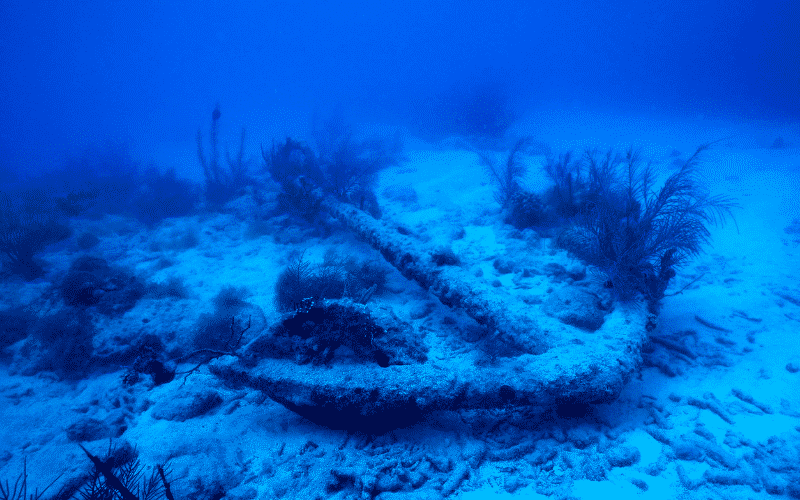 Representation image
When methane hydrate gas or methane clathrates explode, bubbles form on the water surface. This impacts buoyancy and destroys a vessel without even leaving a trace.
However, in 1989, American writer and paranormal activity theorist Charles Berlitz wrote a book, The Dragon’s Triangle, after detailed research on the paranormal activities in the Devil’s Sea. According to him, the accidents involving five Japanese military vessels in the triangle, due to the ‘evil’ nature of the sea, have resulted in the death of more than 700 people.
Later, questioning Charles’s arguments, Larry Kusche published a book titled ‘The Bermuda Triangle Mystery Solved’ in 1995. In his work, Kusche rejected the story of the disappearance of Japanese warships, arguing that the vessels that went missing were fishing boats.
In his book, Kusche also claimed that the research ship sent by the Japanese contained a crew of only 31 people as opposed to the 100 stated by Charles and the vessel was wrecked by an undersea volcano in September 1952.
The remains of the wreckage were retrieved by the Japanese a few years ago which further rejected Charles’s claims.
You might also like to read-
https://www.marineinsight.com/maritime-history/unexplained-mystery-the-devils-sea-the-dragons-triangle/ |
|
|
|
|
San Miguel Ecatepec
San Miguel Ecatepec es una comunidad con categoría de agencia municipal perteneciente a Tequisistlán y al Distrito de Tehuantepec, en el Estado de Oaxaca. Siendo la segunda localidad más poblada del municipio, solo por detrás de la cabecera municipal.2
 Iglesia de San Miguel Ecatepec, Tequisistlán
La localidad se encuentra a 30 km al sureste de la cabecera municipal sobre una brecha de carretera. Se ubican en las coordenadas geográficas:  16°15′37.8″N 95°45′28.1″O.3 16°15′37.8″N 95°45′28.1″O.3
|
|
|
|
|
CARLOS I, JUANA “LA LOCA” Y FELIPE “EL HERMOSO”
PUBLIC DOMAIN
Desde 1536, se acuñaron en la Nueva España las primeras monedas por orden del Rey Carlos I. Eran de 4 reales con la inscripción “Carlos y Juana reyes”, porque fueron emitidas por él, supuestamente con apoyo de su madre la reina Juana I de Castilla, apodada “La Loca” porque perdió la razón a causa de los celos y la muerte de su marido Felipe “El Hermoso”. Estas monedas y las de 8 reales tenían símbolos que luego adoptaría el dólar americano.
HÉRCULES Y EL SÍMBOLO DEL DÓLAR
PUBLIC DOMAIN
A estas monedas les fueron grabados dos mundos y una corona, que simbolizaba el reinado español dividido por el mar, con dos columnas de Hércules, mitológicamente ubicadas en el Estrecho de Gibraltar, que según los griegos era el límite del mundo. En ambas columnas había dos banderines con las palabras “Plus Ultra” (Más Allá) que serpenteaban en forma de S. De ahí se cree que nació la “S” cruzada por dos barras verticales, que se convertiría en el símbolo del dólar.
EL NACIMIENTO DE LA PALABRA “DÓLAR”
GETTY IMAGES
Estas monedas que Carlos I ordenó acuñar eran similares a las que se fabricaban en Europa con el nombre de thaler, una abreviación de Joachimsthaler, una mina en la ciudad de Bohemia, hoy República Checa, pero en ese entonces territorio conquistado por España. Varios países la utilizaron, refiriéndose a ella como daler, daalder o tallero. Dollar fue la versión del nombre y la moneda adoptadas por los colonos británicos de América del Norte por no ser una moneda usada en Inglaterra.
MONEDAS CON EL ROSTRO DE WASHINGTON
PUBLIC DOMAIN
Luego del surgimiento y eventual uso de la libra esterlina, los peniques y chelines acuñados por Massachusetts en 1652, muchos monederos independientes acuñaron entre 1783 y 1792 diversas piezas, siendo las más populares las que traían grabada la imagen del presidente George Washington, a la usanza inglesa de poner a sus reyes en sus monedas. De estas se conocen más de 20 variedades, sobre todo centavos de cobre y plata.
LOS PRIMEROS DÓLARES DE PELO SUELTO
ISTOCK
El Congreso de Estados Unidos fundó en 1792 el United States Mint en Filadelfia, donde se emitió el primer dólar americano a iniciativa del presidente Thomas Jefferson, quien propuso que esta moneda fuera una unidad estándar de dinero. Así fue que se acuñaron piezas de plata de medio centavo, 10 centavos, un cuarto de dólar, medio dólar y un dólar, con la imagen grabada de una mujer de pelo suelto que representaba a la libertad.
https://www.aarp.org/espanol/dinero/creditos-y-deuda/info-2015/historia-dolar-fotos.html |
|
|
|
|
Michael Jackson's untimely death was the tsunami wave hitting land. And he had a message to deliver...

He was 'Bigfoot'...

[Bigfoot = super theme of 2009]
...born in Gary, Indiana
|
Indiana => 'In-Diana' => 'In Moon' (Diana = moon goddess)
|

['Dirty Diana' - video]
...launched to Moon at Apollo

 
...carrying a torch
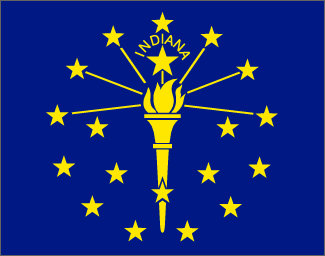
[Indiana state flag]

...of Diana
AKA Flame of Liberty
 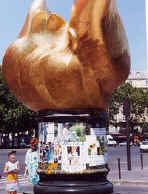
...burning bright in Paris
where she was killed on August 31, 1997

[Diana car accident site in Paris]
...precisely 10 years after 'Bad'
containing hit song 'Dirty Diana'

[Release August 31, 1987]
It was...
'Moon Impact'


 
* * *
'For now doth Cain with fork of thorns confine
On either hemisphere, touching the wave
Beneath the towers of Seville. Yesternight
The moon was round.'
- Dante, Inferno
Why Diana?
'Follow the rabbit', whispered the Man in the Mirror...


 'King of Pop' 'King of Pop'- Christmas - birth of 'King of the Jews'
- Death of Eartha Kitt famous for singing 'Santa Baby'
Reflected in the mirror was a messianic baby... a prince.
Michael Jackson had two boys named 'Prince Michael' and a daughter 'Paris Michael (Katherine)' whom, according to his will, he wanted in the hands of Diana (Ross) if his mother was unavailable, as widely reported on Princess Diana's birthday (July 1).

The close, lifelong ties between Michael Jackson's and his friend Diana Ross are made dramatically clear in his 2002 will - he chose her to raise his three children if his mother is unable to do so. [...]
Note also:
- Princess Diana died in Paris
- Diana's 'baby' Prince William had his birthday (June 21) marked by literal Moon Impact (TV movie) 4 days before MJ's death
- A member of the British Royal Family named Prince Michael (of Kent)
-- June 21, 2009 --
 
['Impact' preview video]
Prince William
He was 'in-Diana'...

He came out of Diana's womb...

He became Prince Charles' 'angel'...
  
...as in Charlie's Angels
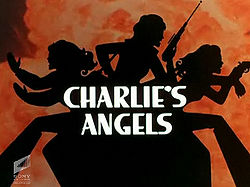
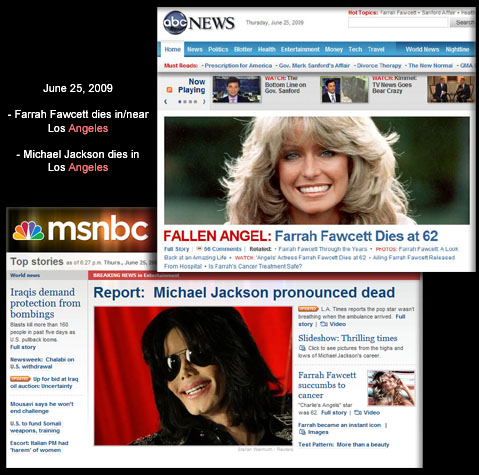
Jun 25 Farrah Fawcett succumbs to cancer at 62
Farrah Fawcett:
- One of 'Charlie's Angels'
- Born in Corpus Christi or 'Body of Christ'
- Death hours before Michael Jackson's
Closely preceded by Neda...

Neda:
- Killed on June 20, day before Prince William's BD
- 'Neda' means 'divine message' ('angel' means 'messenger')
Following her heart-breaking death captured on video, Neda became the face of the protests raging at the time in Iran following the June 12 presidential election (starting on June 13).
June 12-13...
 |
 |
| June 11 - Kaguya Moon Impact |
June 12 - Film 'Moon' release |
...Moon/Diana and Bigfoot/St. Anthony
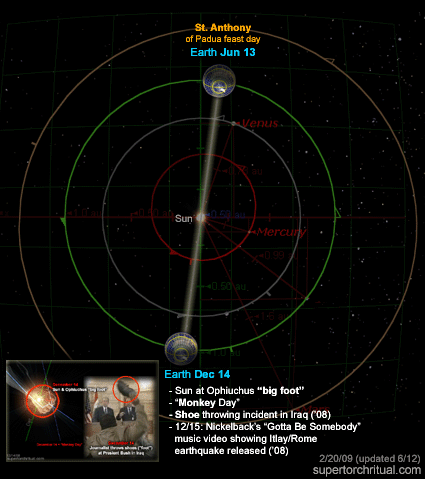
Dec 14 Shoes thrown at Bush on Iraq trip
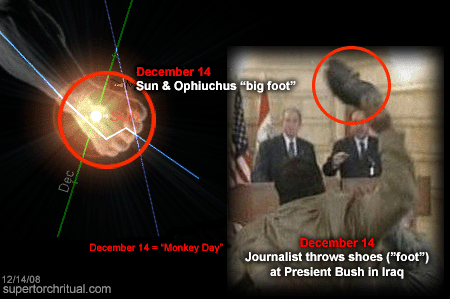

'Bigfoot' = evolution/missing link
Michael Jackson = one-man 'evolution'

[MJ's ever-changing face]
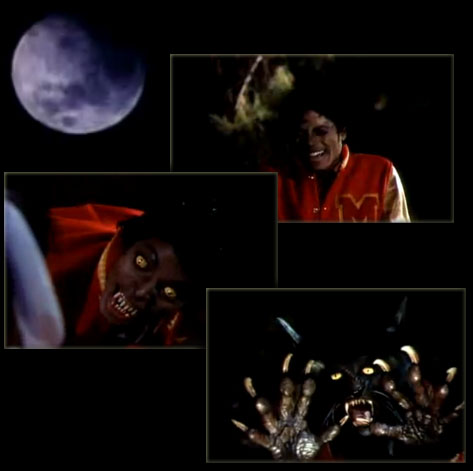
 Werewolf = man-beast = Bigfoot Werewolf = man-beast = Bigfoot
Etymology: The first part, wer, translates as "man"... The second half, wulf, is the ancestor of modern English "wolf"; in some cases it also had the general meaning "beast."
His was an unnatural evolution (plastic surgeries, etc.). What about ours? Is human evolution natural? If not, has the Moon had a hand in it?
 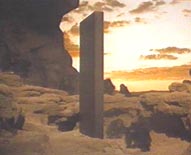
We can almost hear the whisper: 'Human evolution is a hoax':
August 15, 2008
St. Anthony of Padua birthday
Bigfoot hoax...
https://www.goroadachi.com/etemenanki/moonwalker.htm |
|
|
|
|
SEPTEMBER 22/=22/7=MARY MAGDALENE S DAY=NEW YEAR
|
|
|
|
|
During your holidays in Carnac, discover the town’s religious heritage: its six chapels will take you on a journey through the centuries.
CHAPEL OF St Michel
The Chapel of Saint Michel de Carnac was rebuilt around 1813 and again in 1925 on the same plans as the original chapel dating from 1664. It is located on the highest point of the town, the tumulus hill. Below is St Michel devotional fountain. Women whose husbands were at sea, used to sweep the chapel in the direction they wanted to see the wind blow. Then they would to pray at the fountain and drink the water. St Michel’s saints day is in September. There is an orientation table at the high point of the hill.
Climb to the top of the tumulus and admire the breathtaking views of the ocean and islands.
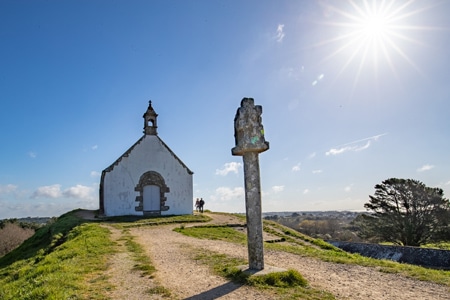
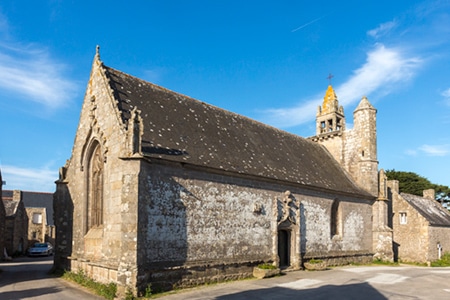
CHAPEL OF St Colomban
The Chapel of Saint Colomban, built in the flamboyant Gothic style, dates from the end of the sixteenth century. It is consecrated to the Irish monk Saint Columba, the patron saint of fools. To the east of the village, with its granite houses, is the fountain of Saint Colomban, which has two drinking pools. The wash house was a meeting place for the village women. South of the village, by the sea, are two chimneys, the remains of a forge.
The chapel is open all year round from 10 am to 6 pm. Entrance is free.
CHAPEL OF Kergroix
The Kergroix chapel dates back to the 16th century, although it was rebuilt in 1951. The Forgiveness of Our Lady of the Cross is celebrated in September. The chapel is open to the public all summer.
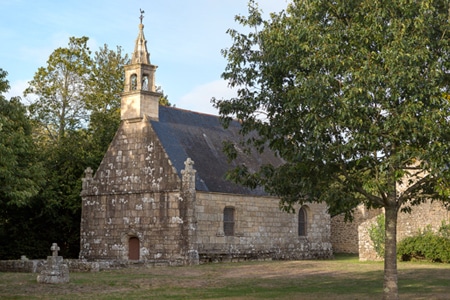
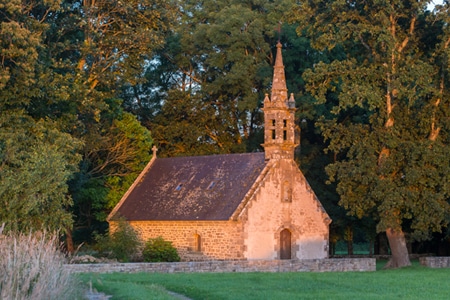
CHAPEL OF la Madeleine
The site of the chapel was once a leper colony. The present chapel was rebuilt in 1976. It is open and tended by local people in the summer. The most important service takes place in July. Next to the chapel, you will discover the fountain, the source of which is said to cure fever and skin diseases.
Continue your walk towards the Chapel of Hahon and the Chapel of Coet, both to the North of Carnac.
https://www.carnactourism.co.uk/discover/menhirs-and-heritage/heritage/carnac-chapels |
|
|
|
|
Solar god theories
[edit]
According to Macrobius who cites Nigidius Figulus and Cicero, Janus and Jana (Diana) are a pair of divinities, worshipped as Apollo or the sun and moon, whence Janus received sacrifices before all the others, because through him is apparent the way of access to the desired deity.[51][52]
A similar solar interpretation has been offered by A. Audin who interprets the god as the issue of a long process of development, starting with the Sumeric cultures, from the two solar pillars located on the eastern side of temples, each of them marking the direction of the rising sun at the dates of the two solstices: the southeastern corresponding to the Winter and the northeastern to the Summer solstice. These two pillars would be at the origin of the theology of the divine twins, one of whom is mortal (related to the NE pillar, nearest the Northern region where the sun does not shine) and the other is immortal (related to the SE pillar and the Southern region where the sun always shines). Later these iconographic models evolved in the Middle East and Egypt into a single column representing two torsos and finally a single body with two heads looking at opposite directions.[53]
Numa, in his regulation of the Roman calendar, called the first month Januarius after Janus, according to tradition considered the highest divinity at the time.
 The temple of Janus with closed doors, on a sestertius issued under Nero in 66 AD from the mint at Lugdunum The temple of Janus with closed doors, on a sestertius issued under Nero in 66 AD from the mint at Lugdunum
Numa built the Ianus geminus (also Janus Bifrons, Janus Quirinus or Portae Belli), a passage ritually opened at times of war, and shut again when Roman arms rested.[54] It formed a walled enclosure with gates at each end, situated between the old Roman Forum and that of Julius Caesar, which had been consecrated by Numa Pompilius himself. About the exact location and aspect of the temple there has been much debate among scholars.[55] In wartime the gates of the Janus were opened, and in its interior sacrifices and vaticinia were held, to forecast the outcome of military deeds.[56] The doors were closed only during peacetime, an extremely rare event.[57] The function of the Ianus Geminus was supposed to be a sort of good omen: in time of peace it was said to close the wars within or to keep peace inside;[which?] in times of war it was said to be open to allow the return of the people on duty.[58]
A temple of Janus is said to have been consecrated by the consul Gaius Duilius in 260 BC after the Battle of Mylae in the Forum Holitorium. It contained a statue of the god with the right hand showing the number 300 and the left the number 65—i.e., the length in days of the solar year—and twelve altars, one for each month.[59]
The four-sided structure known as the Arch of Janus in the Forum Transitorium dates from the 1st century of the Christian era: according to common opinion it was built by the Emperor Domitian. However American scholars L. Ross Taylor and L. Adams Holland on the grounds of a passage of Statius[60] maintain that it was an earlier structure (tradition has it the Ianus Quadrifrons was brought to Rome from Falerii[61]) and that Domitian only surrounded it with his new forum.[62] In fact the building of the Forum Transitorium was completed and inaugurated by Nerva in AD 96.
Another way of investigating the complex nature of Janus is by systematically analysing his cultic epithets: religious documents may preserve a notion of a deity's theology more accurately than other literary sources.
The main sources of Janus's cult epithets are the fragments of the Carmen Saliare preserved by Varro in his work De Lingua Latina, a list preserved in a passage of Macrobius's Saturnalia (I 9, 15–16), another in a passage of Johannes Lydus's De Mensibus (IV 1), a list in Cedrenus's Historiarum Compendium (I p. 295 7 Bonn), partly dependent on Lydus's, and one in Servius Honoratus's commentary to the Aeneis (VII 610).[63] Literary works also preserve some of Janus's cult epithets, such as Ovid's long passage of the Fasti devoted to Janus at the beginning of Book I (89–293), Tertullian, Augustine and Arnobius.
As may be expected the opening verses of the Carmen,[64] are devoted to honouring Janus, thence were named versus ianuli.[65] Paul the Deacon[66] mentions the versus ianuli, iovii, iunonii, minervii. Only part of the versus ianuli and two of the iovii are preserved.
The manuscript has:
- (paragraph 26): "cozeulodorieso. omia ũo adpatula coemisse./ ian cusianes duonus ceruses. dun; ianusue uet põmelios eum recum";
- (paragraph 27): "diuum êpta cante diuum deo supplicante." "ianitos".
Many reconstructions have been proposed:[67] they vary widely in dubious points and are all tentative, nonetheless one can identify with certainty some epithets:
- Cozeiuod[68] orieso.[69] Omnia vortitod[70] Patulti; oenus es
- iancus (or ianeus), Iane, es, duonus Cerus es, duonus Ianus.
- Veniet potissimum melios eum recum.
- Diuum eum patrem (or partem) cante, diuum deo supplicate.
- ianitos.[71]
The epithets that can be identified are:
- Cozeuios
- i.e. Conseuius the Sower, which opens the carmen and is attested as an old form of Consivius in Tertullian;[72]
- Patultius
- the Opener;
- Iancus or Ianeus
- the Gatekeeper;
- Duonus Cerus
- the Good Creator;
- rex
- king (potissimum melios eum recum – the most powerful and best of kings);
- diuum patrem (partem)
- [73] father of the gods (or part of the gods);
- diuum deus
- god of the gods;
- ianitos
- keeping track of time, Gatekeeper.
The above-mentioned sources give: Ianus Geminus, I. Pater, I. Iunonius, I. Consivius, I. Quirinus, I. Patulcius and Clusivius (Macrobius above I 9, 15): Ι. Κονσίβιον, Ι. Κήνουλον, Ι. Κιβουλλιον, I. Πατρίκιον, I. Κλουσίβιον, I. Ιουνώνιον, I. Κυρινον, I. Πατούλκιον, I. Κλούσιον, I. Κουριάτιον (Lydus above IV 1); I. Κιβούλλιον, I. Κυρινον, I. Κονσαιον, I. Πατρίκιον (Cedrenus Historiarum Compendium I p. 295 7 Bonn); I. Clusiuius, I. Patulcius, I. Iunonius, I. Quirinus (Servius Aen. VII 610).
Even though the lists overlap to a certain extent (five epithets are common to Macrobius's and Lydus's list), the explanations of the epithets differ remarkably. Macrobius's list and explanation are probably based directly on Cornelius Labeo's work, as he cites this author often in his Saturnalia, as when he gives a list of Maia's cult epithets[74] and mentions one of his works, Fasti.[75] In relating Janus' epithets Macrobius states: "We invoke in the sacred rites". Labeo himself, as it is stated in the passage on Maia, read them in the lists of indigitamenta of the libri pontificum. On the other hand, Lydus's authority cannot have consulted these documents precisely because he offers different (and sometimes bizarre) explanations for the common epithets: it seems likely he received a list with no interpretations appended and his interpretations are only his own.[76]
|
|
|
|
|
BIENVENUE
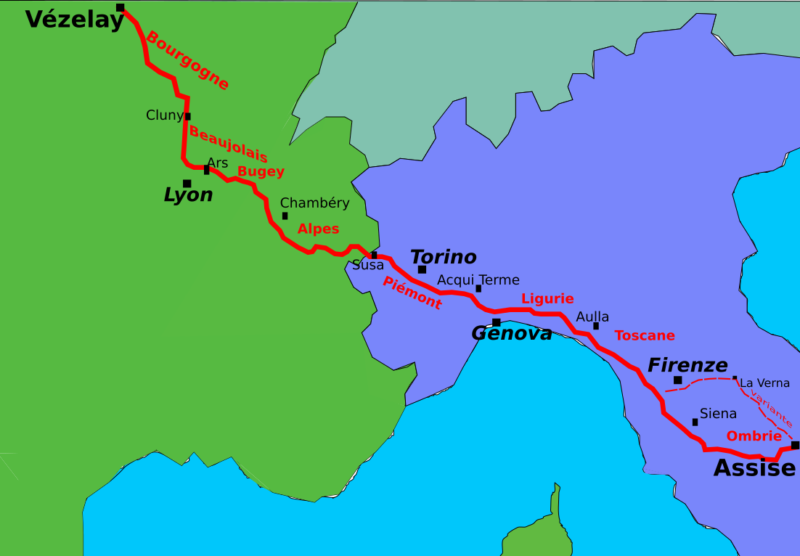
AVANT TOUTE CHOSE …
Nous sommes heureux de partager avec vous, amis pèlerins, la joie de la rencontre fraternelle ! Ce chemin se veut être une démarche de pèlerinage dans l’esprit de Saint François.
Accueillir la fraternité comme un cadeau, rechercher la simplicité et même la sobriété, vivre l’instant présent sans se soucier, c’est s’imprégner petit à petit de l’esprit de l’évangile tel que St François a choisi de le vivre. Le chemin est ouvert à toutes et tous et il apportera une joie authentique à celles et ceux qui auront au plus vrai d’eux-mêmes la paix du cœur.
Chemins de foi, chemins pour tous
Depuis de nombreux siècles, des pèlerins ont traversé l’Europe pour se rendre en Terre Sainte, à St Jacques de Compostelle, à Rome … pour des raisons spirituelles essentiellement mais ensuite aussi pour des raisons économiques et, plus récemment, pour goûter aux plaisirs de la marche, des paysages, du silence et de la solitude …
Aujourd’hui, de plus en plus de personnes, croyantes ou non, empruntent ces chemins tracés par les premiers pèlerins.
Un peu partout, des associations se sont créées pour redonner vie à ces itinéraires, notamment ceux vers Compostelle, mais aussi celui de Canterbury à Rome (« via francigena »), le Chemin de St-Michel, et bien d’autres. C’est aussi le cas pour ce « récent » chemin de 1500 km vers Assise.
Ainsi, elles témoignent d’un intérêt renouvelé pour la découverte du patrimoine culturel et artistique et pour une autre forme de ressourcement personnel ou de recherche d’épanouissement par un nouveau style de loisirs.
https://chemindassise.org/fr/accueil/ |
|
|
 Primer Primer
 Anterior
111 a 125 de 125
Siguiente Anterior
111 a 125 de 125
Siguiente
 Último
Último

|

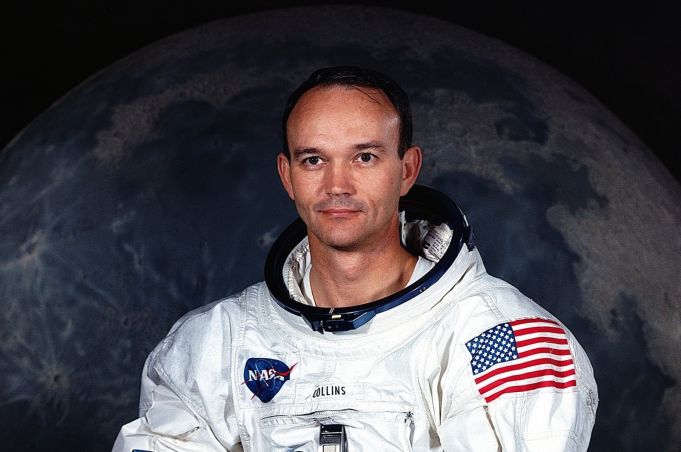
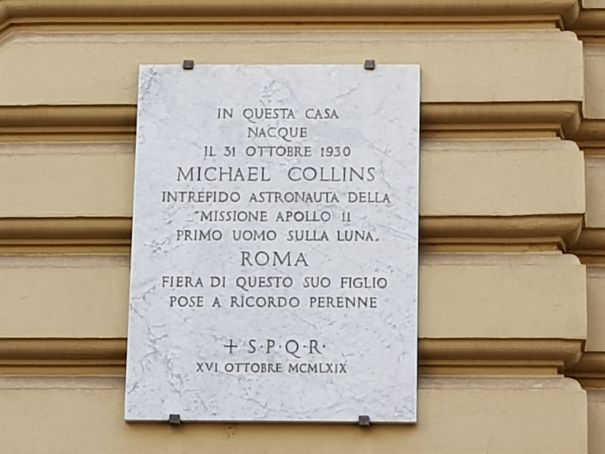




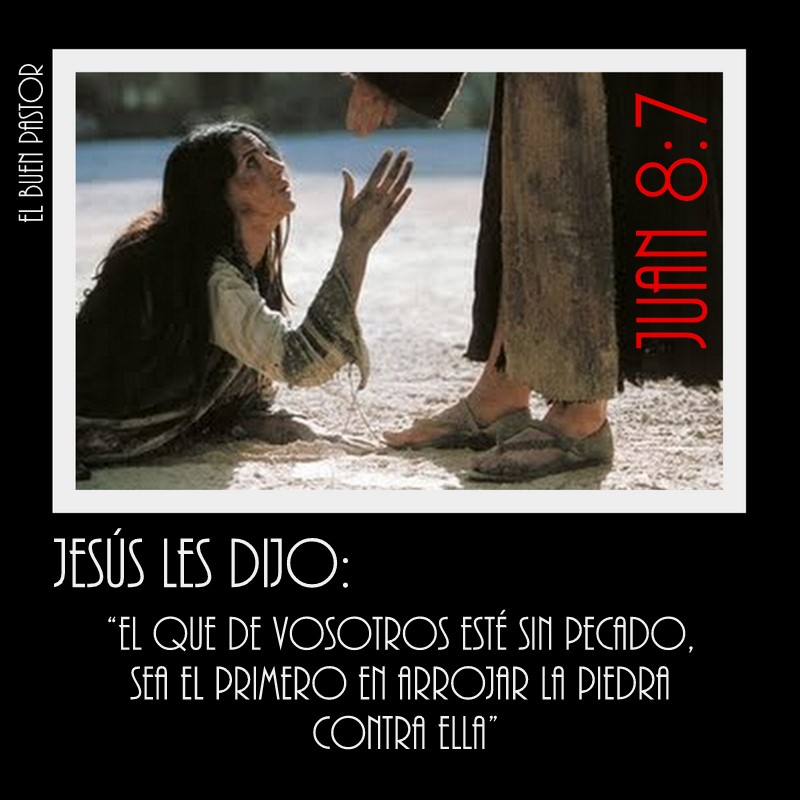
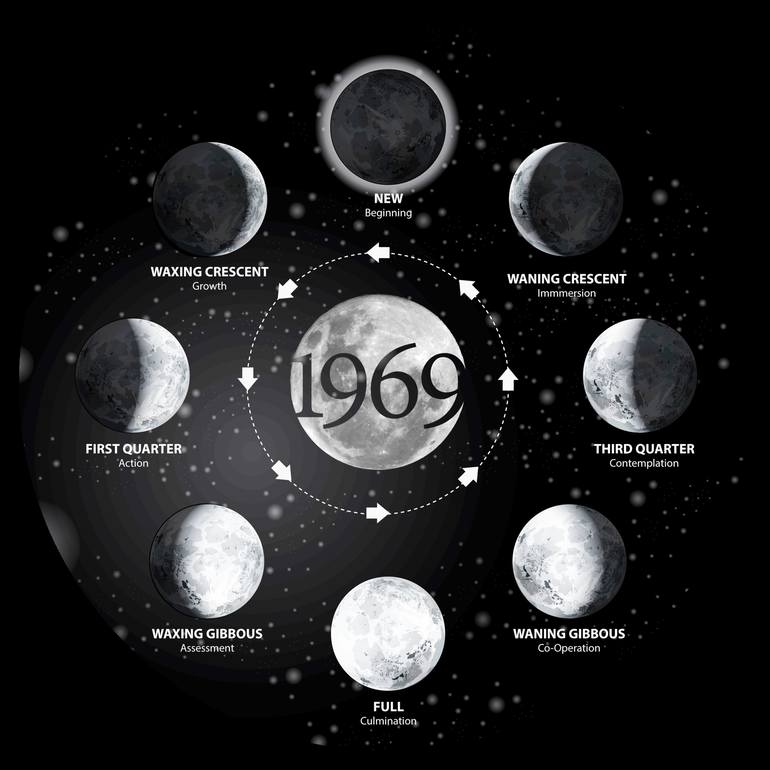
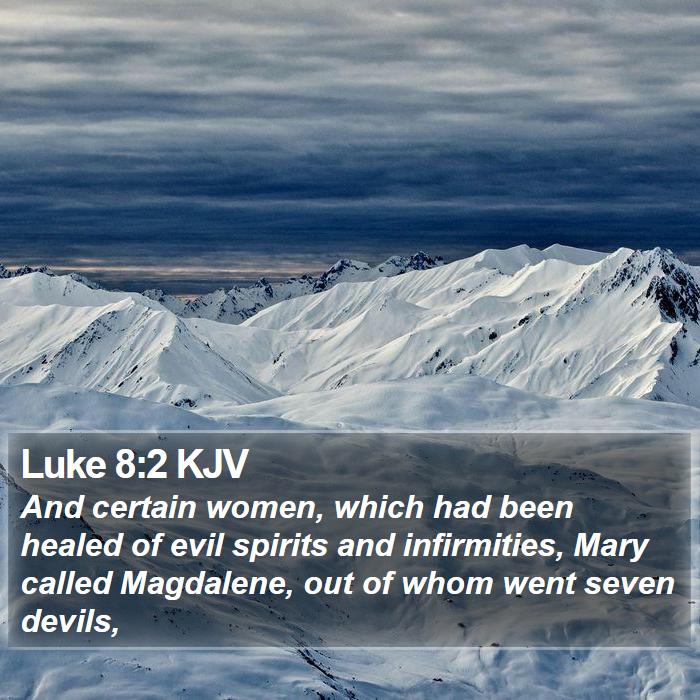
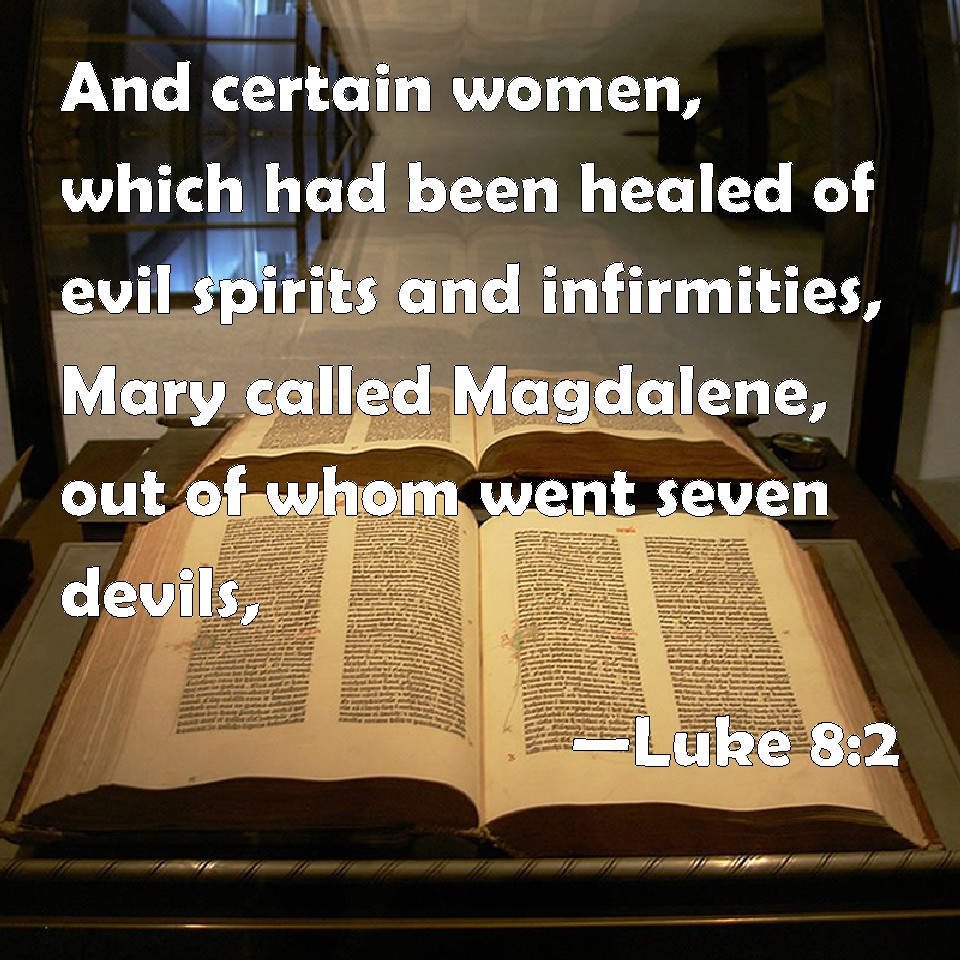
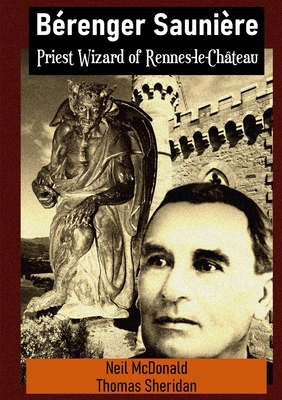

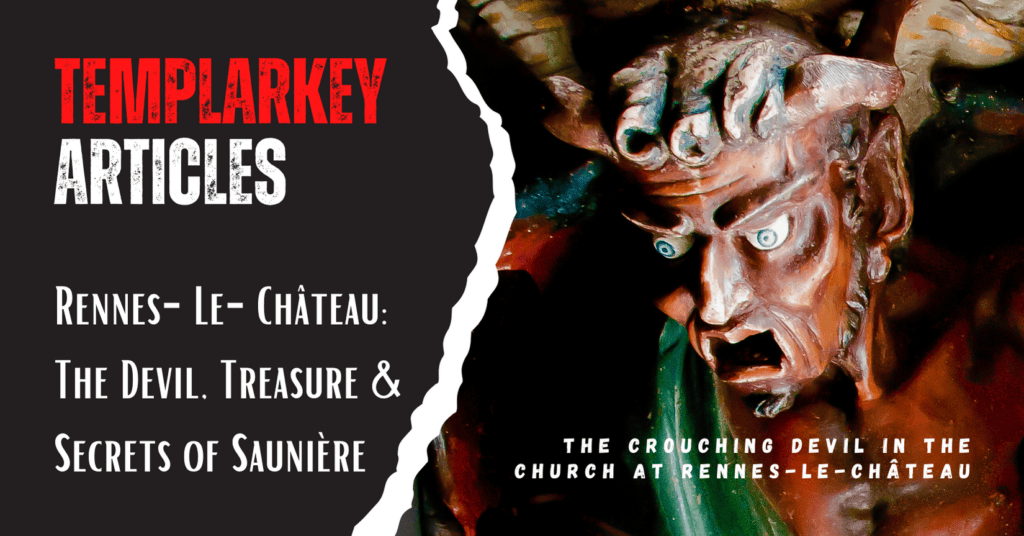
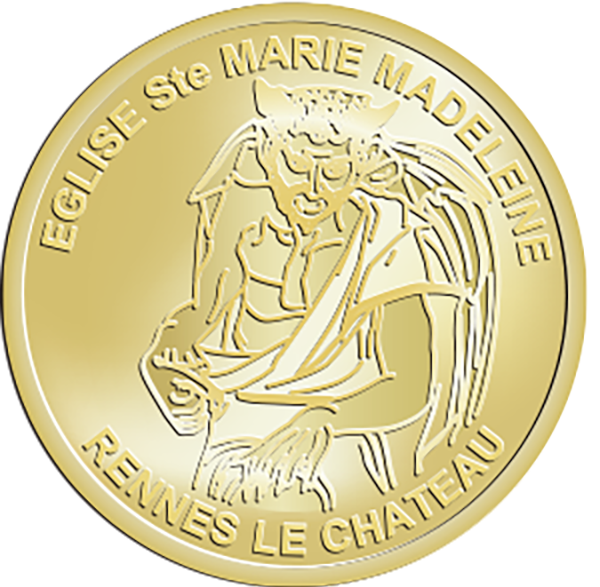




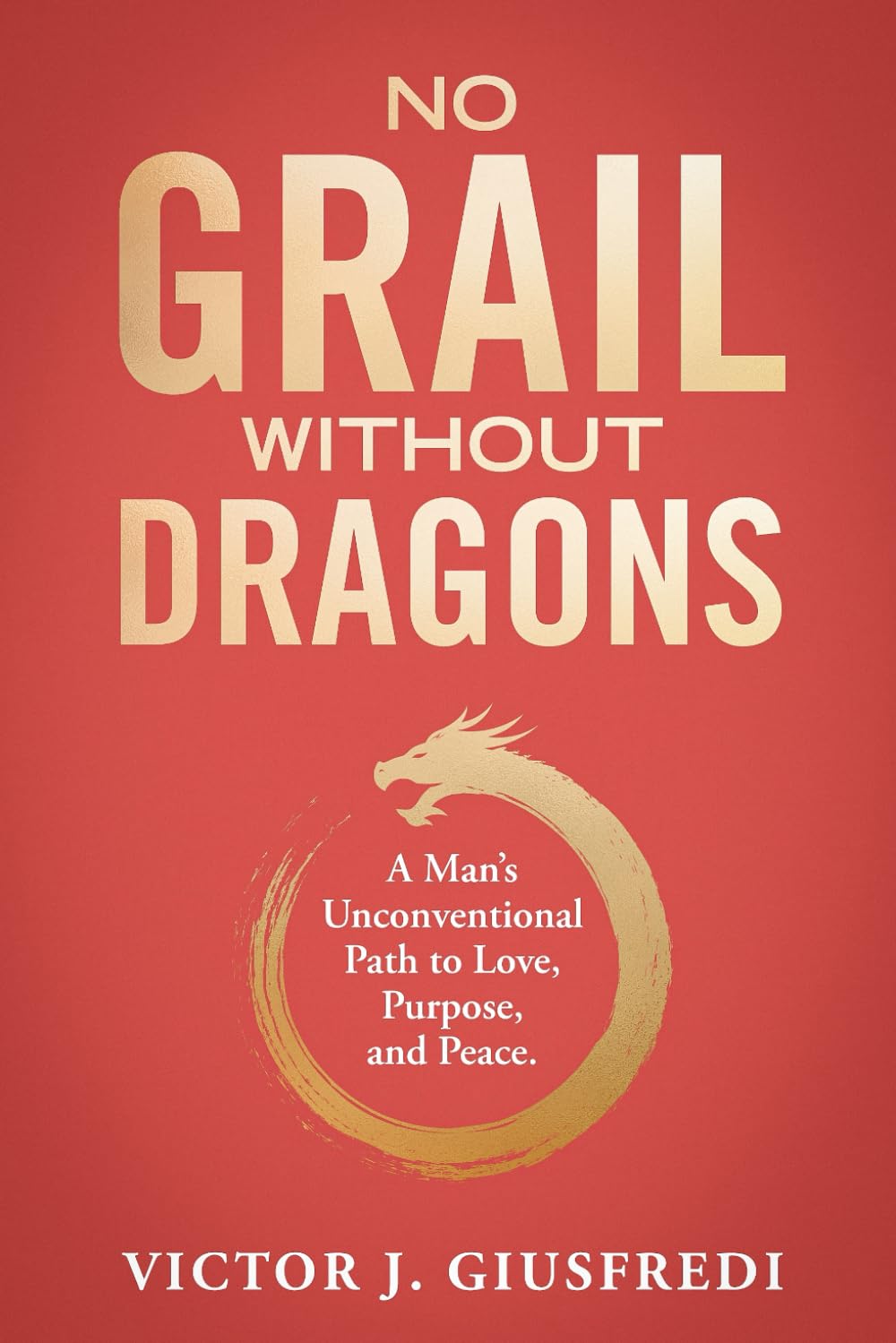


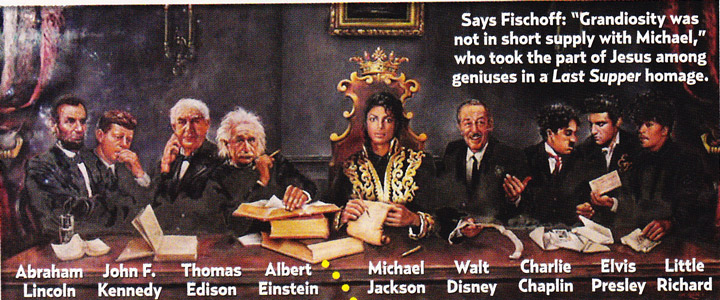






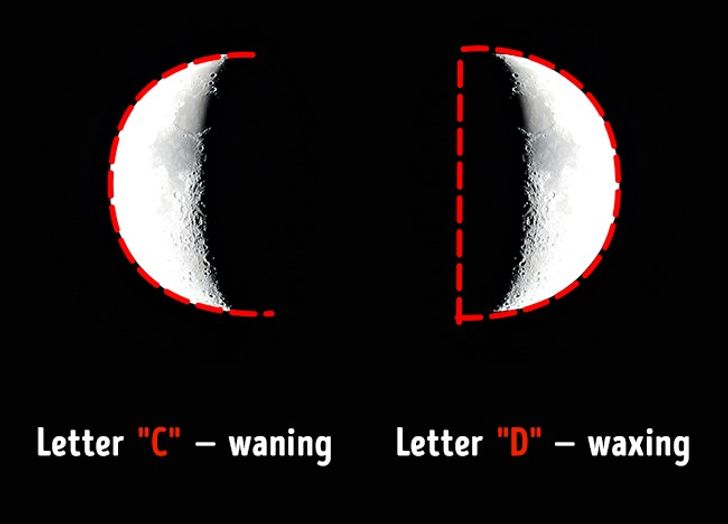





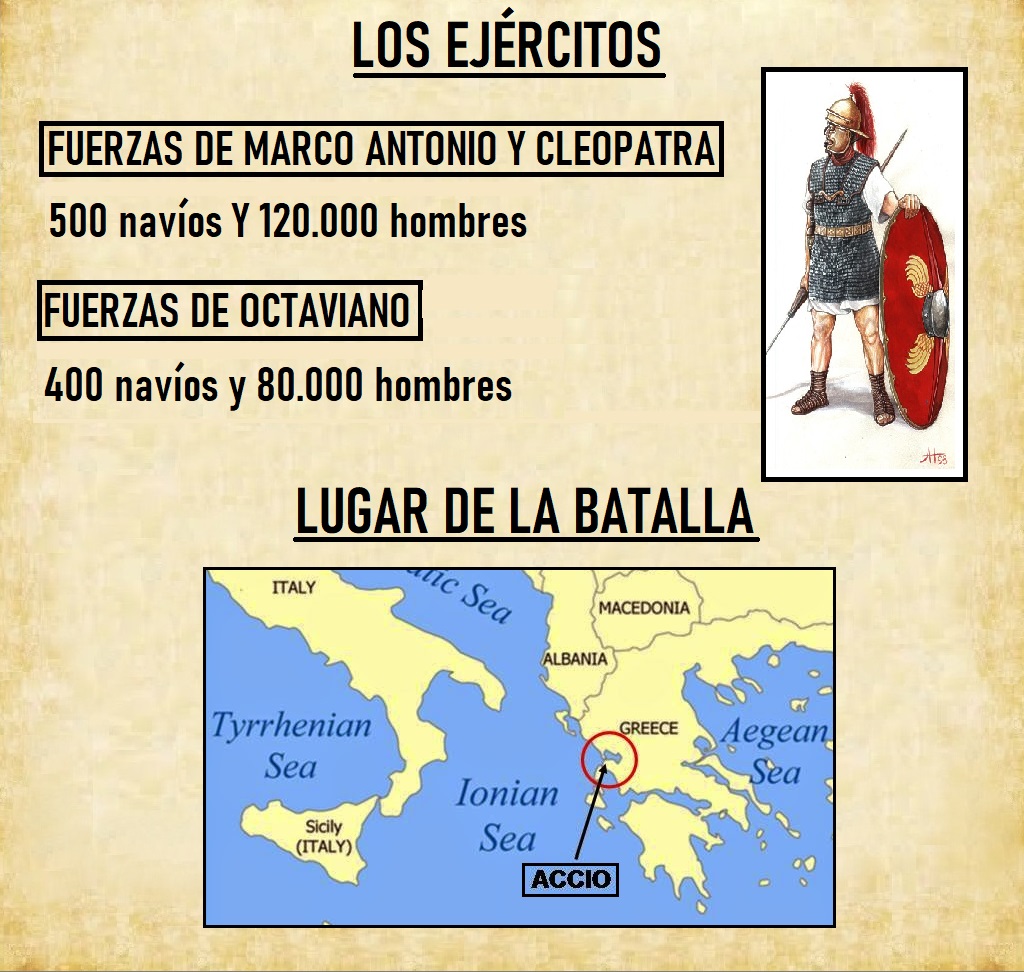

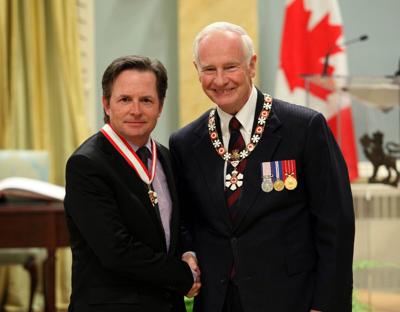



 Representation image
Representation image
 Representation image
Representation image






















































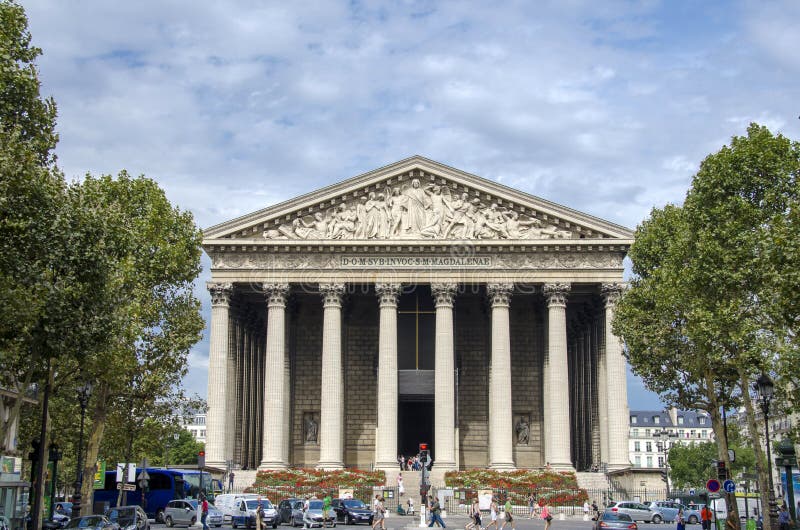
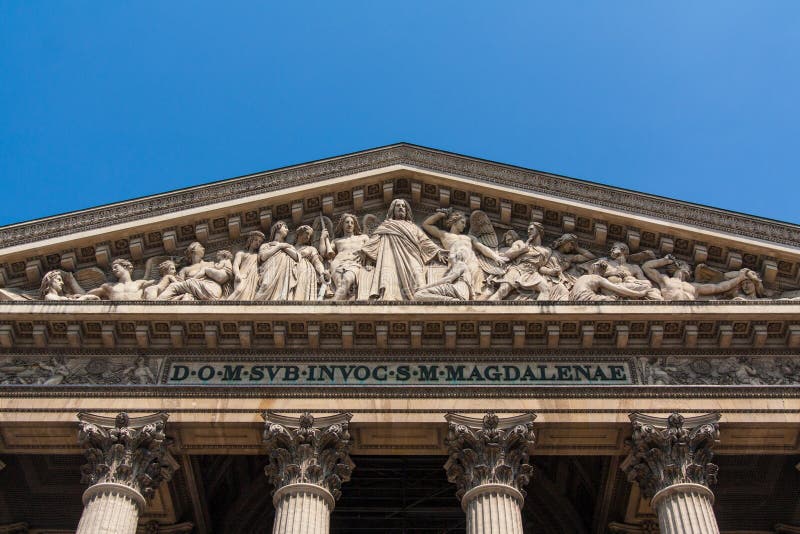

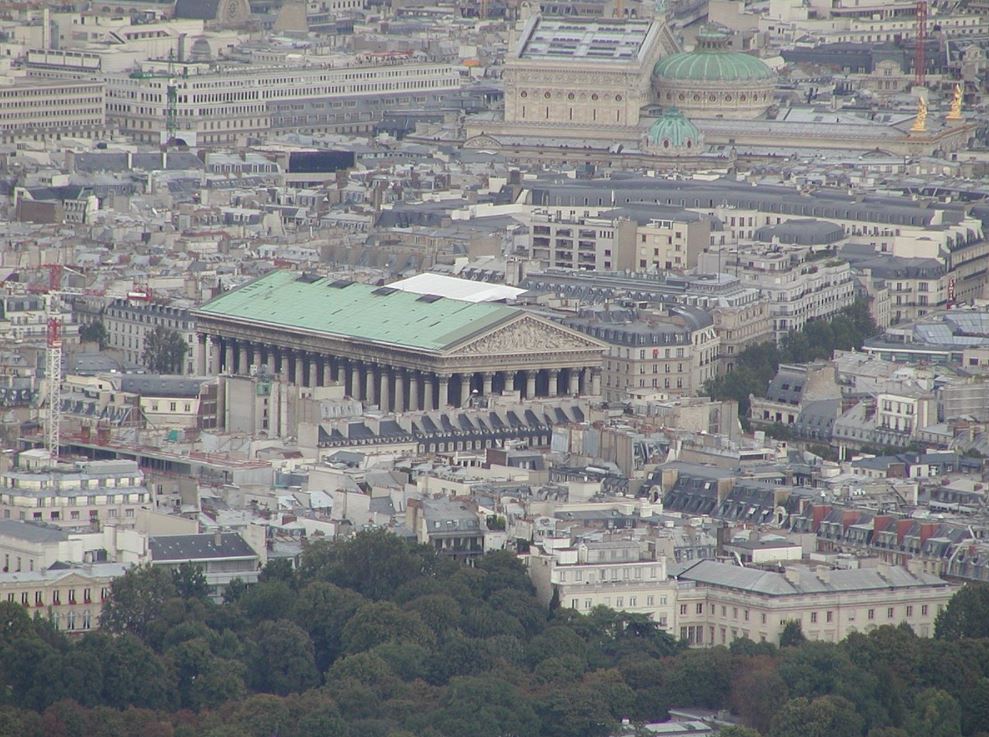
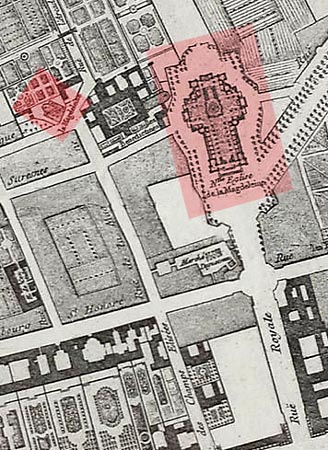



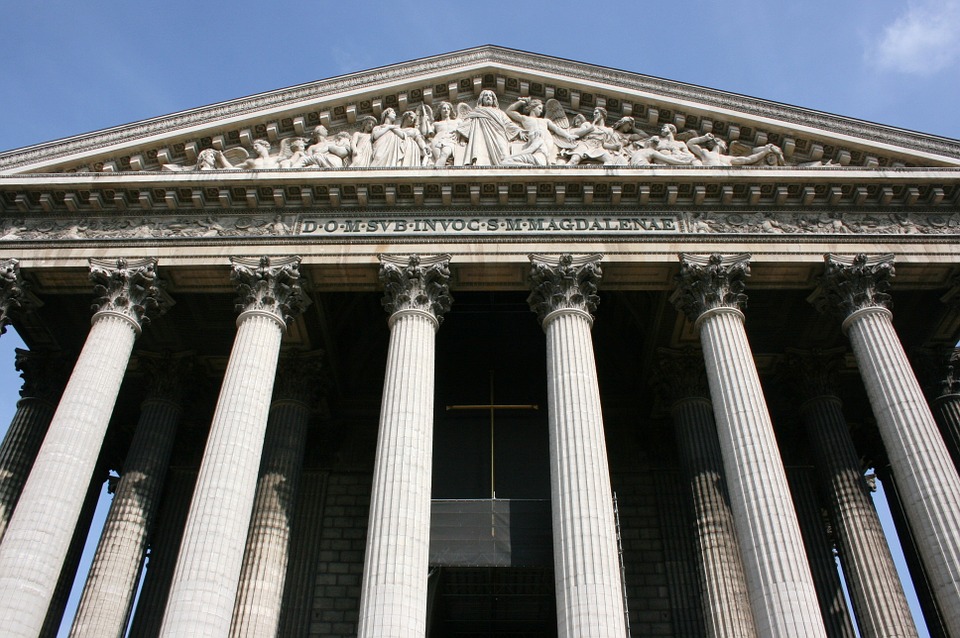
![PDF] Applying Golden Ratio in Product Packaging and Its Effect on Consumer ' s Buying Behaviour | Semantic Scholar](https://d3i71xaburhd42.cloudfront.net/c165da18263b580ae561090171c166c8fa054a6a/3-Figure1-1.png)

